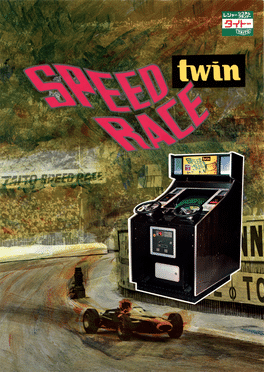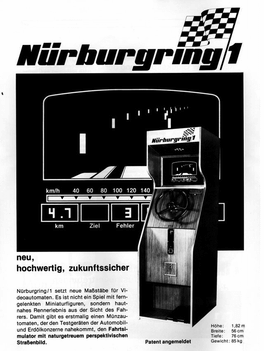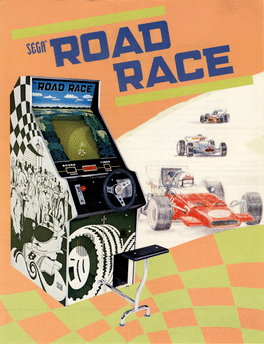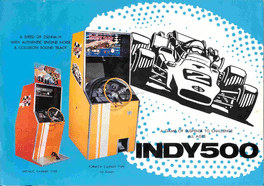New Racing Games - Page 130
-
Speed Race Twin
1976
Speed Race Twin
1976
A racing game released by Taito in 1976. It is a simultaneous two-player version of Tomohiro Nishikado's 1974 arcade game Speed Race. -
Nurburgring-1
1976
Nurburgring-1
1976
Considered by many to be the first fully electronic, first-person driving simulator, this was Dr. Reiner Forest's attempt at miniaturizing the racecar driving experience. It directly inspired Ted Michon's game Night Racer, which in turn led to him working with Midway to create 280 Zzzap around the same time. Meanwhile, Atari designer Dave Sheppard saw a screenshot of what was very likely Nürburgring 1 in a magazine; this led to the company's own iteration, the better-known Night Driver. The arcade cabinet has a black and white monitor, a steering wheel and two foot pedals for gas and brake. The screen is completely black with white rectangles representing roadside poles. A monitor overlay sticker displays the car hood and boxes at the bottom of the screen for the distance, speed and misses. The player gets 90 seconds to drive across the finish line; crashing the car results in a time penalty. The game plays the sound of the engine and screaming tires. -
Road Race
1976
-
Wipeout
1972
-
Indy 500
1969




